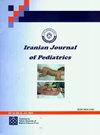儿童尿路感染的强化与手工尿液分析比较
IF 0.4
4区 医学
Q4 PEDIATRICS
引用次数: 0
摘要
背景:尿路感染是儿童最常见的细菌感染之一。尿分析(UA)是初步诊断尿路感染的有益方法。UA中细菌尿的存在可以通过增强(使用未离心的革兰氏染色标本)或手动(使用离心标本)技术来确定。然而,增强UA的诊断性能在儿童uti中尚未建立。目的:评价增强和自动化尿液分析检测儿童尿路感染的能力。方法:本横断面研究对2018年至2019年在伊朗马什哈德谢赫医生医院转诊的191例尿路感染症状儿童进行了研究。对标本进行标准尿液分析、强化尿液分析和定量尿液培养。增强UA试验阳性定义为每mL尿液中白细胞≥10个,革兰氏染色涂片每10个高倍镜视野中存在任何细菌。手动UA试验阳性定义为每高倍视场≥5个白细胞。将标准UA和增强UA的结果与尿培养结果进行比较,以确定这两种方法检测尿路感染的准确性。测定每项试验的敏感性、特异性、阳性预测值(PPV)和阴性预测值(NPV)。结果:结果显示尿路感染患病率为23%。增强UA检索检测uti的敏感性为97.7%,特异性为93.1%,PPV为81.1%,NPV为99.3%。在标准UA中,脓尿的敏感性、特异性、PPV和NPV分别为90.9%、80.7%、57.1%和96.6%,亚硝酸盐试验的敏感性、特异性、PPV和NPV分别为56.8%、98.6%、92.5%和88.4%,白细胞酯酶试验的敏感性、特异性和NPV分别为72.7%、94.5%、80%和92%。结论:增强UA比标准UA具有更高的敏感性、特异性、PPV和NPV。本文章由计算机程序翻译,如有差异,请以英文原文为准。
Comparison of Enhanced and Manual Urinalysis for Detecting Urinary Tract Infections in Children
Background: Urinary tract infections (UTIs) are among the most common bacterial infections in children. Urinalysis (UA) is a beneficial test for the preliminary diagnosis of UTIs. The presence of bacteriuria in UA can be determined by either an enhanced (using uncentrifuged Gram-stained specimens) or manual (using centrifuged specimens) technique. However, the diagnostic performance of enhanced UA is not well-established in childhood UTIs. Objectives: To assess the ability of enhanced and automated urinalysis to detect UTIs in children. Methods: This cross-sectional study was conducted on 191 children with the symptoms of UTI referred to Dr. Sheikh Hospital, Mashhad, Iran, from 2018 to 2019. Standard urinalysis, enhanced urinalysis, and quantitative urine culture were performed on specimens. A positive enhanced UA test was defined as ≥ 10 white blood cells per mL of urine and the presence of any bacteria per 10 high-power microscopic fields of a Gram-stained smear. A positive manual UA test was defined as ≥ 5 white blood cells per high-power field. The results of standard and enhanced UA were compared with urine culture findings to determine the accuracy of these two methods in detecting UTIs. Sensitivity, specificity, positive predictive value (PPV), and negative predictive value (NPV) were determined for each test. Results: The results showed that the prevalence of UTI was 23%. Enhanced UA retrieved a sensitivity of 97.7%, specificity of 93.1%, PPV of 81.1%, and NPV of 99.3% for detecting UTIs. In standard UA, sensitivity, specificity, PPV, and NPV were 90.9%, 80.7%, 57.1%, and 96.6% for pyuria, 56.8%, 98.6%, 92.5%, and 88.4% for the nitrite test, 72.7%, 94.5%, 80%, and 92% for the leukocyte esterase test, respectively. Conclusions: Enhanced UA had higher sensitivity, specificity, PPV, and NPV than standard UA.
求助全文
通过发布文献求助,成功后即可免费获取论文全文。
去求助
来源期刊
CiteScore
0.90
自引率
20.00%
发文量
75
审稿时长
6-12 weeks
期刊介绍:
Iranian Journal of Pediatrics (Iran J Pediatr) is a peer-reviewed medical publication. The purpose of Iran J Pediatr is to increase knowledge, stimulate research in all fields of Pediatrics, and promote better management of pediatric patients. To achieve the goals, the journal publishes basic, biomedical, and clinical investigations on prevalent diseases relevant to pediatrics. The acceptance criteria for all papers are the quality and originality of the research and their significance to our readership. Except where otherwise stated, manuscripts are peer-reviewed by minimum three anonymous reviewers. The Editorial Board reserves the right to refuse any material for publication and advises that authors should retain copies of submitted manuscripts and correspondence as the material cannot be returned. Final acceptance or rejection rests with the Editors.

 求助内容:
求助内容: 应助结果提醒方式:
应助结果提醒方式:


